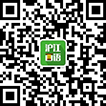研英阅读高分训练:时文精选(3)
Hack the Planet: Science's Best Hope — or Worst Nightmare — for Averting Climate Catastrophe by Eli Kintisch
Dangerous journey
For the time being, however, all of the existing plans and proposals are just “armchair geoengineering”, as Kintisch puts it. And the cast of armchair geoengineers is still very small. The result is that both books cover a lot of the same ideas and quote many of the same sources, and both have in-depth chapters about two particular options: fertilizing the oceans with iron, and ships spewing cloud-brightening particles. Kintisch's book, though, offers up more examples of geoengineering. One is a proposition by the nonprofit Ice911, started by California-based engineer Leslie Field, to protect sea ice from melting by covering it with sacks full of silicon beads. Another is a scheme put forward by atmospheric scientist Brian Toon, who proposes modifying coal-fired power plants to belch the chemical carbonyl sulphide at ground level, from where, Toon figures, it will eventually be carried up to the stratosphere and turn into light-reflecting sulphates.
Kintisch also digs deeper than Goodell into explaining the details of how geoengineering might work — and why it would be so difficult to do well. A reporter for the journal Science who regularly covers geoengineering for the journal's ScienceInsider blog, Kintisch likewise takes an insider's view in Hack the Planet. That's not to say Kintisch argues in favour of geoengineering, but that he writes from firmly within the world of science, and for an audience who's comfortable with science, too. He never explains the term 'hack' in the title, for example, which is borrowed from computer hacking and reflects the idea that geoengineering involves interfering with fundamental aspects of the climate to change how the whole system works. For this reason, scientists and other science-literate readers — especially those who already have some familiarity with geoengineering — will probably prefer Kintisch's book over Goodell's.
In contrast, Goodell's book takes a step back, presenting an outsider's view —unsurprising, as he is a regular reporter for Rolling Stone, the music and politics magazine. This perspective allows Goodell to be a guide to those who might reject the whole idea of geoengineering as far-fetched or crazy. “You don't need a Ph.D. in physics to understand the basic insanity of this undertaking,” Goodell writes, while emphasizing that the outlook for the planet is so bad that we have to think about these options anyway. Of the two authors, Goodell does a better job of taking the reader on a journey. Most chapters in How to Cool the Planet feature a central character, from geoengineer David Keith tinkering in his lab at the University of Calgary to environmentalist and scientist James Lovelock strolling the countryside around his quaint English home. By digging into their stories, Goodell portrays geoengineering as a human endeavour, carrying hefty doses of uncertainty, doubt and fear.
It what seems to be an odd coincidence, both books end by likening geoengineering to some kind of planetary gardening. Goodell takes some comfort in this notion, whereas Kintisch is sceptical about the idea that we can tame and control ecosystems, let alone the whole planet. To my mind, a better analogy for geoengineering would be industrial agriculture, with vast feedlots and fields of crops planted and harvested by machines. This system works for now, but its sustainability is increasingly coming into question. Similarly, geoengineering might appear to work well for a while before its dark side becomes evident. As Princeton University's Robert Socolow recently told the Asilomar meeting: “Be very careful.” Geoengineering comes with some strong warnings, and they're worth heeding.
猜你喜欢
- 出国留学中介前十名介绍 沪江是最好的选择
想要出国留学却没有时间没有精力去办理出国留学的手续,这个时候寻找一个好的出国留学中介就成了最好的办法,好的中介可以让自己更合理的去挑选自己喜欢的国家和学校,而且中介还有出国培训相关的内容,这...
- 日本动漫游戏:学校的圣域
feng社第9作第1弹《彼女のセイイキ(她的圣域)》,而系列的第2弹《妹的圣域》已于2015年08月28日发售,系列第3弹《学校的圣域》在2016年11月发售。
- 日本惊悚恐怖电影《裸体之夜:掠夺狂爱》
《裸体之夜2:掠夺狂爱》是由石井隆执导,竹中直人、佐藤宽子等领衔主演日本惊悚情色电影。该片讲述了主人公红次郎替年轻女孩加藤怜寻找叫“多绘”的救命恩人,结果踏入充满危机的“粉红”漩涡中。
- 秒变单身狗:哪些话不能对恋人说
恋爱初期总是美好而甜蜜的,然而两人长期处下来,就会发现对方的不足之处。生气起来口不择言,结果深深的伤害到两人的感情。这期给大家介绍一些对恋人可不能说的一些话。
- 「こんにちわ」是个啥?你知道吗?
常逛日站或是和日本朋友聊天的小伙伴们肯定经常会听到一句:こんにちわ,从发音上我们可以猜出来是こんにちは,但是这个こんにちわ是怎么来的呢?他又是什么呢?下面就让沪江日语教研君来告诉你吧!
- 日本礼仪:你真的会斟酒吗?
走进社会,我们不仅要在工作上努力努力再努力,还要一边学习一些社交礼仪。酒会作为一种常见的社交活动,学会其中的斟酒礼仪也是一门学问。今日,小编给大家整理了日本的斟酒礼仪供大家参考学习。
- 汉字词和成语 - 속담_뜻이 비슷한 속담
가재는 게와 생김새가 비슷하기 때문에 게 편을 든다는 말로, 서로 인연이 있는 것끼리 한편이 된다는 뜻이다. 비슷한 속담으로 '초록은 동색', … 가재는 게와 생김새가 비슷하기 때문에 게 ...


